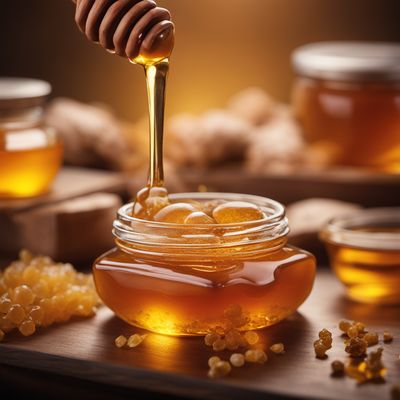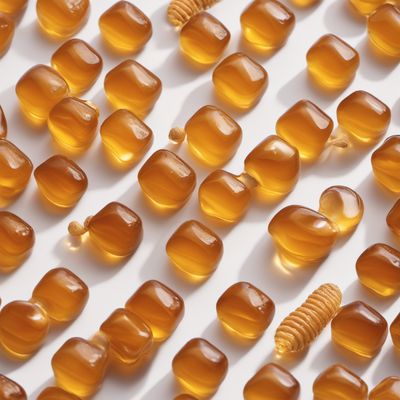
Ingredient
Comb honey
Nature's Sweet Treasure: Comb Honey
Comb honey consists of hexagonal wax cells filled with honey, which are created by bees within the hive. It has a thick and chewy texture with a rich, floral flavor that varies depending on the nectar sources available to the bees. The appearance of comb honey is visually striking, with the golden honey-filled cells contrasting against the white beeswax.
Origins and history
The tradition of harvesting comb honey dates back centuries, with evidence of its consumption found in ancient civilizations. It has been enjoyed for its natural sweetness and medicinal properties. Comb honey is often associated with artisanal beekeeping and is highly valued for its purity and unique taste.
Nutritional information
Comb honey is a natural sweetener that contains various enzymes, antioxidants, and trace amounts of vitamins and minerals. It is a healthier alternative to processed sugars and has antibacterial properties. The nutritional content of comb honey can vary depending on the nectar sources, but it generally provides around 64 calories and 17 grams of carbohydrates per tablespoon.
Allergens
Bee products
How to select
When selecting comb honey, look for pieces that are well-sealed and free from any signs of mold or fermentation. The beeswax should be clean and free from debris. Opt for locally sourced comb honey to support local beekeepers and ensure freshness. Consider the nectar sources used by the bees, as it can influence the flavor profile of the honey.
Storage recommendations
To maintain the freshness and quality of comb honey, store it in a cool and dry place away from direct sunlight. Keep it tightly sealed to prevent moisture absorption. Comb honey can be stored for an extended period without losing its flavor or nutritional value.
How to produce
Producing comb honey requires specialized beekeeping knowledge and equipment. It involves providing bees with suitable hive conditions and ensuring a healthy and abundant nectar flow. Amateur beekeepers can start by learning the basics of beekeeping and gradually progress to harvesting comb honey.
Preparation tips
Comb honey can be enjoyed as a spread on toast, biscuits, or pancakes. It can also be used as a natural sweetener in tea, coffee, or dressings. The chewy texture of comb honey adds a delightful element to cheese platters or charcuterie boards. Use a knife or spoon to cut or scoop out portions of comb honey as needed.
Substitutions
Liquid honey, creamed honey
Culinary uses
Comb honey is commonly used as a spread or sweetener in various dishes and beverages. It is also a popular choice for honey enthusiasts who appreciate its natural form and unique texture. Comb honey is often enjoyed as a standalone treat or used as an ingredient in desserts and baked goods.
Availability
Comb honey is available in specialty stores, farmers markets, and artisanal food shops. It can also be purchased directly from local beekeepers or online honey retailers.
More ingredients from this category
Recipes using Comb honey » Browse all

Mézes Krémes - Hungarian Honey Cake
Golden Layers of Hungarian Honey Cake Bliss

Welsh Dragon Souffle
Fiery Delight: Welsh Dragon Souffle

Monmouthshire-style Qai Ci
Welsh-inspired Spicy Chicken Stir-Fry

Basque-style Kaiserschmarrn
Puffy Basque Delight: A Twist on Kaiserschmarrn

Egyptian-style Sweet Doughnuts
Honey-Glazed Delights: Egyptian Sweet Doughnuts

Swabian Baumkuchen - Layered Cake from Swabia
Swabian Delight: Layered Baumkuchen with a Twist

Lithuanian Honey Cake with Spiced Cream
Golden Delight: A Sweet Symphony of Lithuanian Honey Cake

Moldovan-style Cream Cheese Dessert
Velvety Delight: Moldovan Cream Cheese Dream

Jibachi Senbei - Japanese Honey Bee Rice Crackers
Buzzing Delights: Sweet and Crunchy Japanese Honey Bee Rice Crackers

Cornish-style Baked Beans
Cornish Coastal Baked Beans: A Taste of the Sea

Ruske Kape with a Somali Twist
Spiced Chocolate Coconut Delights: Somali Ruske Kape

Namibian Mess
Savannah Delight: Namibian Mess with a Twist


